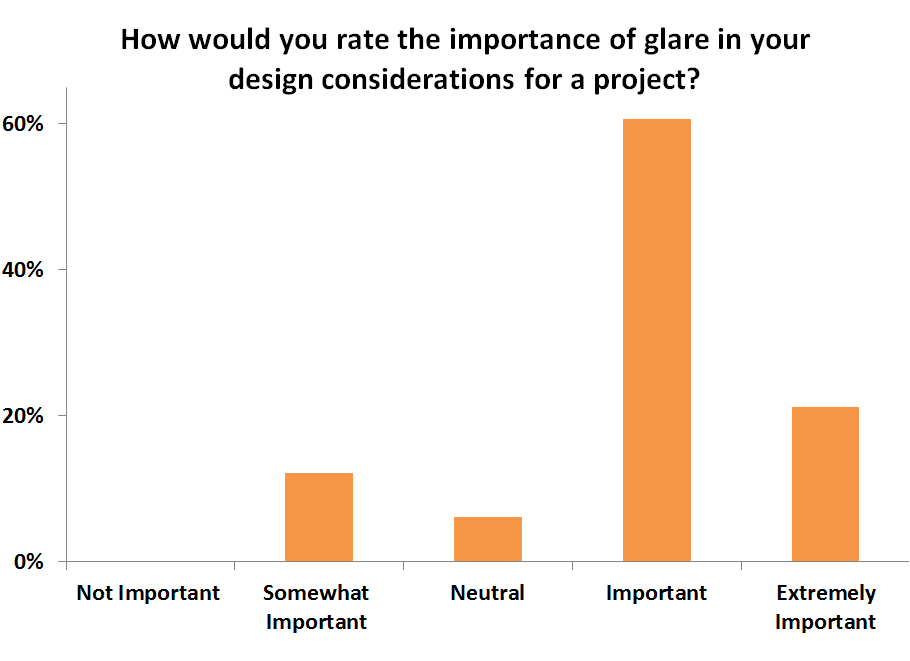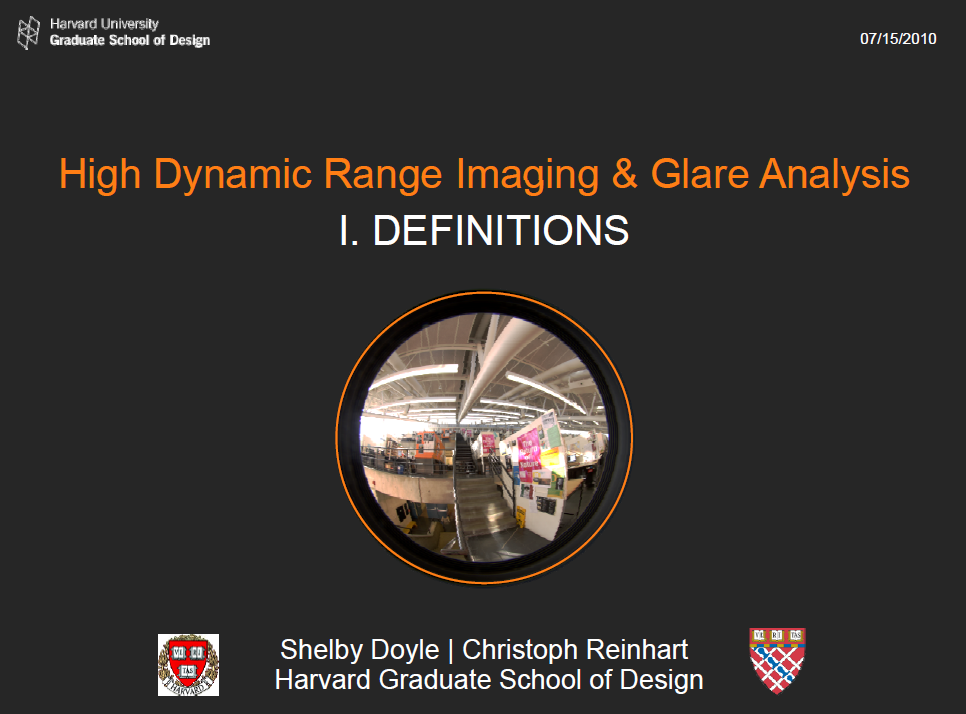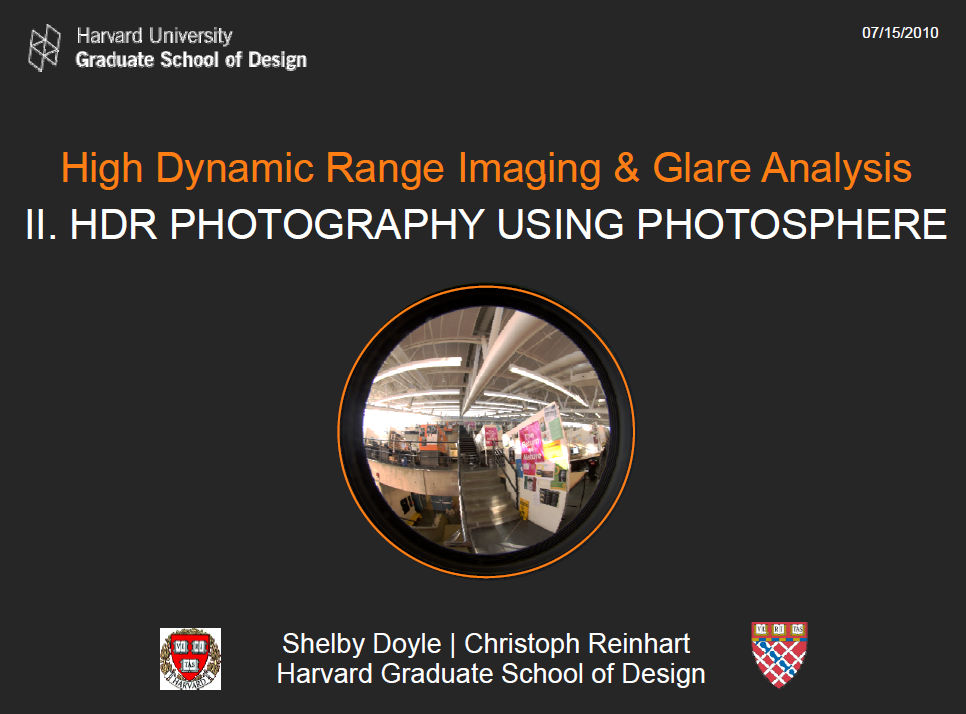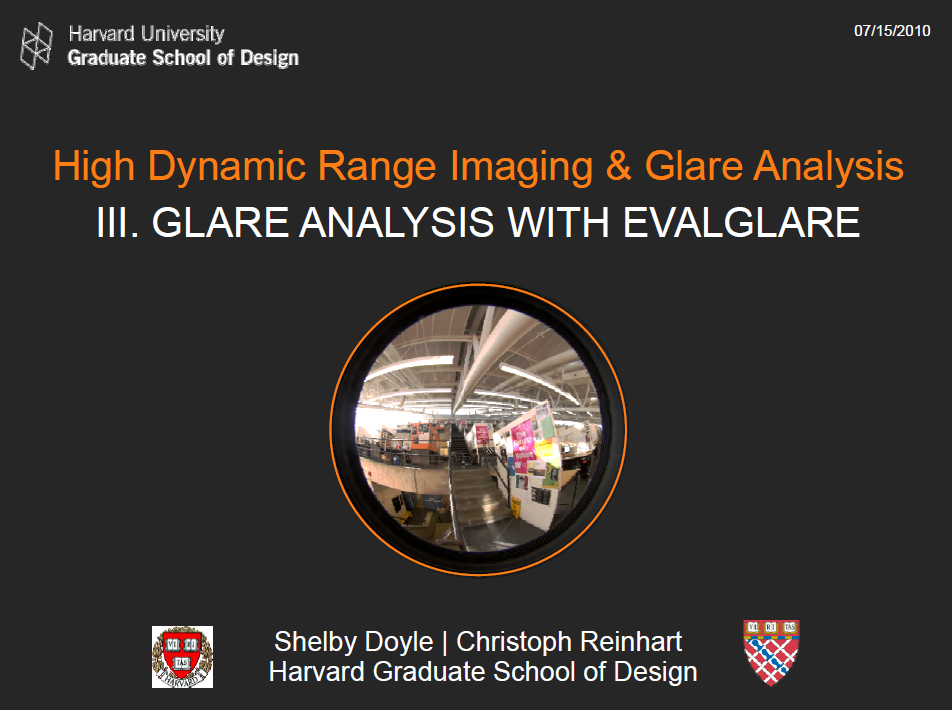Glare, physical discomfort caused by contrast or luminous intensity, is an underutilized parameter in contemporary architectural design. This project consists of a series of related activities that are concerned with experimental and computer-based design analysis techniques to asses the appearance of glare in daylit spaces.
Does it matter?
In a 2011 survey of 135 architects, lighting designers and consultants over 80% of participants voted glare to be either an important or extremely important design consideration. In order to predict or measure the appearance of glare due to daylight, the majority of survey participants used daylight simulations combined with luminance contrast assessments and detection of direct sunlight near occupant work spaces. Only seven participants reported that they are using using image-based glare metrics such as daylight glare probabiltity (DGP). DGP is a metric to predict the appearance of discomfort galre in daylit spaces proposed in 2005 by Jan Wienold and Jens Christoffersen (original paper). Below you will find several resources on how to apply computer-based glare analysis techniques during building design.
Fig 1: Survey of 135 architects, lighting designers and consultants (Mogri 2011).
HDR Photography | Photosphere | Evalglare
The daylight glare probability metric can be applied to both, high dynamic range (HDR) photographs of daylit scenes and HDR renderings generated using a daylight simulation software such as Radiance. The images below link to a series of tutorials that review basic glare and photometric definitions, explain how to generate a calibrated HDR photograph using a software called photosphere written by Greg Ward and how to conduct a glare analysis of a resulting HDR image using a program called evalglare written by Jan Wienold.
DIVA for Rhino
As mentioned above, it is also possible to conduct a computer-based glare analysis of daylit spaces using Radiance nad Evalglare. The DIVA-for-Rhino plug-infor Rhinoceros allows users to conduct this type of analysis for either a specifc moment in time (Fig 1) or for a whole year (Fig 2).
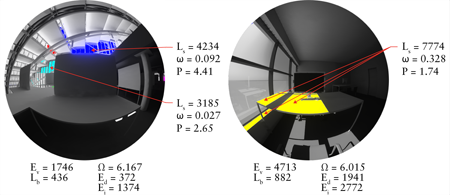
Fig 2: Point in Time Glare analysis based on Radiance and evalglare using DIVA-forRhino (more>>).
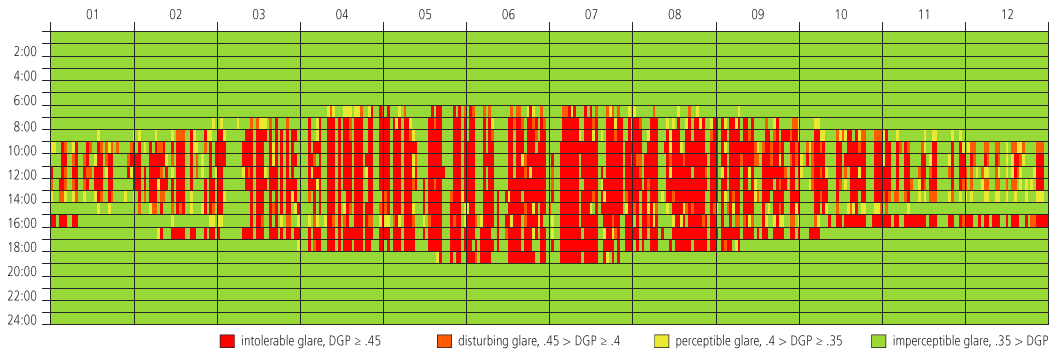
Fig 3: Annual Daylight Glare Probability simulation; the x-axis corresponds to different days of the year, the y-axis corresponds to time of day. Red and orange fields correspond to hours with intolerable or disturbing glare, respectively more>>.
Adaptive Visual Comfort
In this study we compared simulation results for five glare metrics under 144 clear sky conditions in three spaces in order to investigate the ability of these metrics to predict the occurrence of discomfort glare and to hence support the design of comfortable spaces. The metrics analyzed are Daylight Glare Index, CIE Glare Index, Visual Comfort Probability, Unified Glare Rating, and Daylight Glare Probability. It is found that Daylight Glare Probability yields the most plausible results. In an attempt to deal with multiple positions and view directions simultaneously, the concept of an 'adaptive zone' is introduced within which building occupants may freely adjust their position and view in order to minimize the effect of glare. The spatial and directional extents of the adaptive zone depend on furniture layout and the freedom of occupants' tasks. It is found that applying the adaptive zone concept to a sidelit office with manually operated venetian blinds reduces the predicted hours of intolerable discomfort glare from 735 to 18 occupied hours per year and increases the annual mean daylight availability from 40 to 72 percent. paper in Lighting Research & Technology | more animations
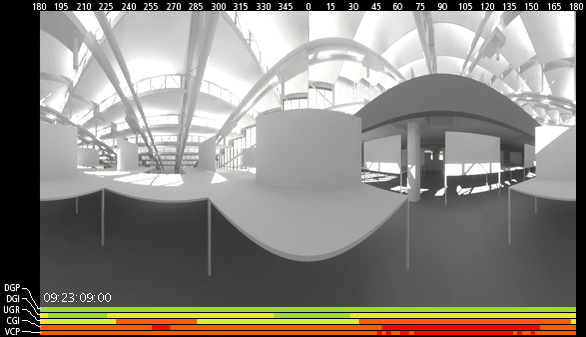
Fig 4:The animated image above shows a cylindrical 360o view of a work space in a studio sapce. The color coded lines at the bottom show the predictions of different glare indices (DGP, DGI, UGI, CGI and VCP) whether discomfort glare will be experienced in a particular direction at at different times of the day (Green=Imperceptible Glare; Yellow=Perceptible Glare; Orange=Disturbing Glare; Red=Intolerable Glare).
